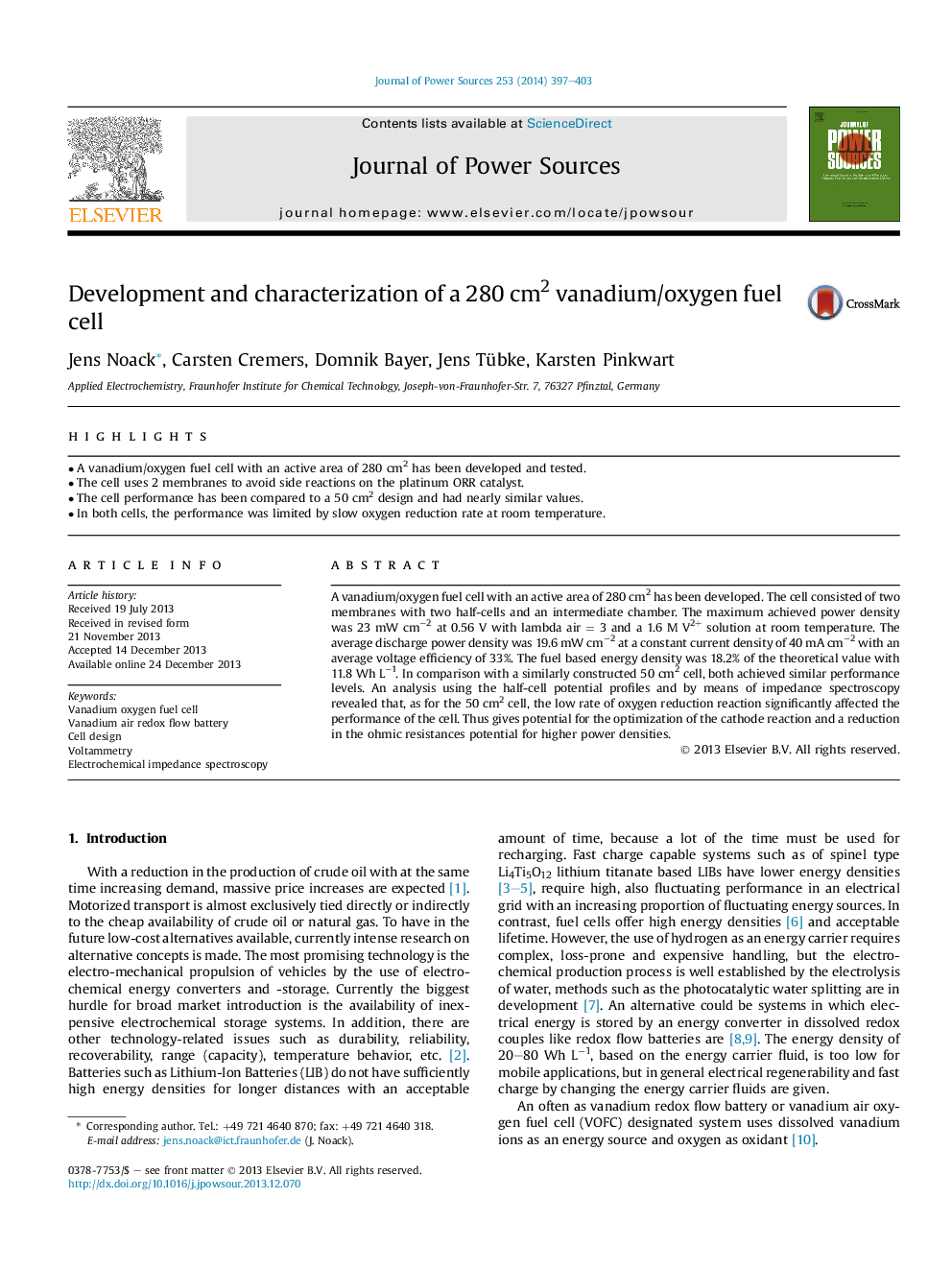| Article ID | Journal | Published Year | Pages | File Type |
|---|---|---|---|---|
| 1287104 | Journal of Power Sources | 2014 | 7 Pages |
•A vanadium/oxygen fuel cell with an active area of 280 cm2 has been developed and tested.•The cell uses 2 membranes to avoid side reactions on the platinum ORR catalyst.•The cell performance has been compared to a 50 cm2 design and had nearly similar values.•In both cells, the performance was limited by slow oxygen reduction rate at room temperature.
A vanadium/oxygen fuel cell with an active area of 280 cm2 has been developed. The cell consisted of two membranes with two half-cells and an intermediate chamber. The maximum achieved power density was 23 mW cm−2 at 0.56 V with lambda air = 3 and a 1.6 M V2+ solution at room temperature. The average discharge power density was 19.6 mW cm−2 at a constant current density of 40 mA cm−2 with an average voltage efficiency of 33%. The fuel based energy density was 18.2% of the theoretical value with 11.8 Wh L−1. In comparison with a similarly constructed 50 cm2 cell, both achieved similar performance levels. An analysis using the half-cell potential profiles and by means of impedance spectroscopy revealed that, as for the 50 cm2 cell, the low rate of oxygen reduction reaction significantly affected the performance of the cell. Thus gives potential for the optimization of the cathode reaction and a reduction in the ohmic resistances potential for higher power densities.
